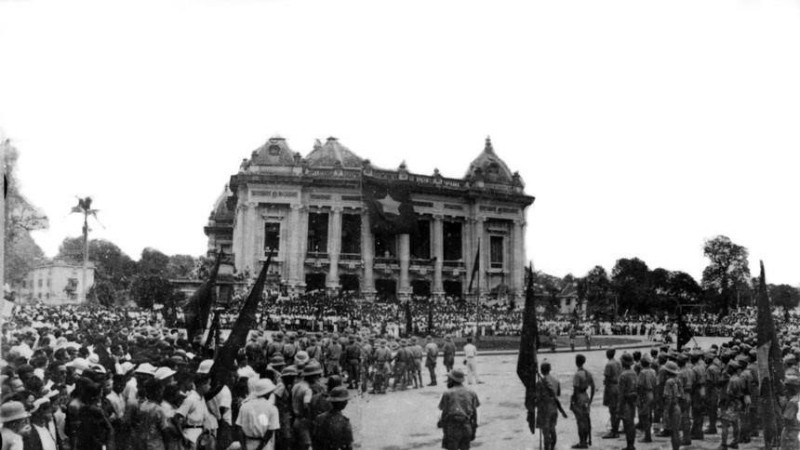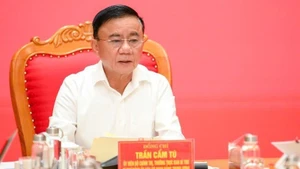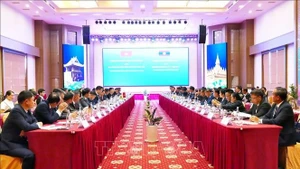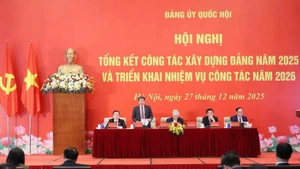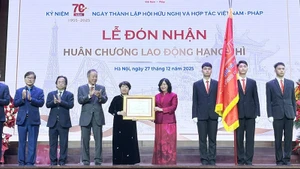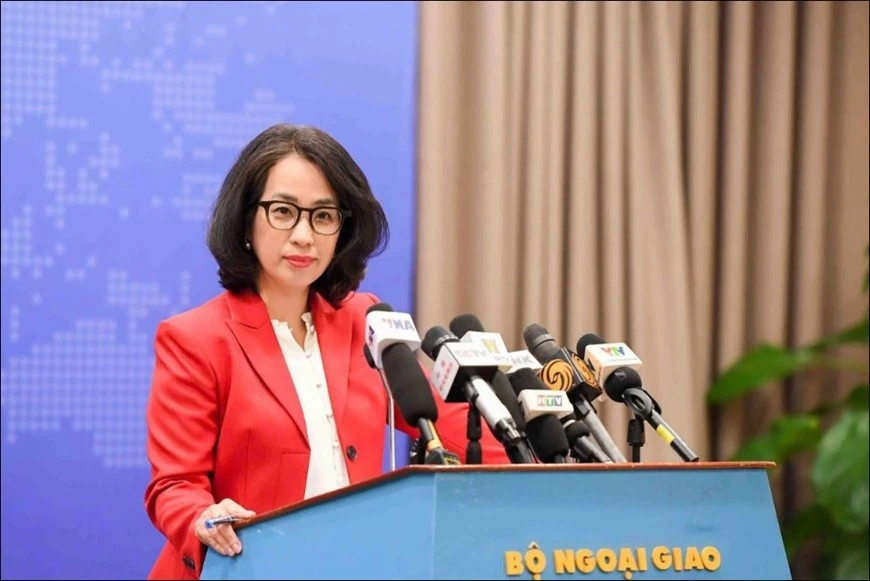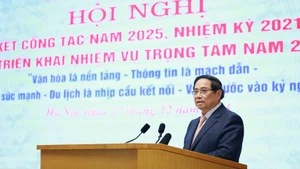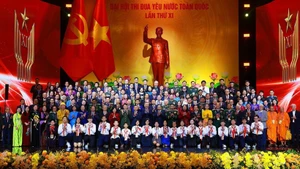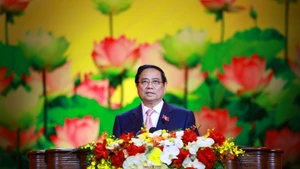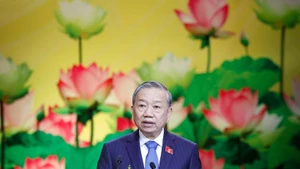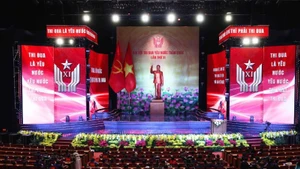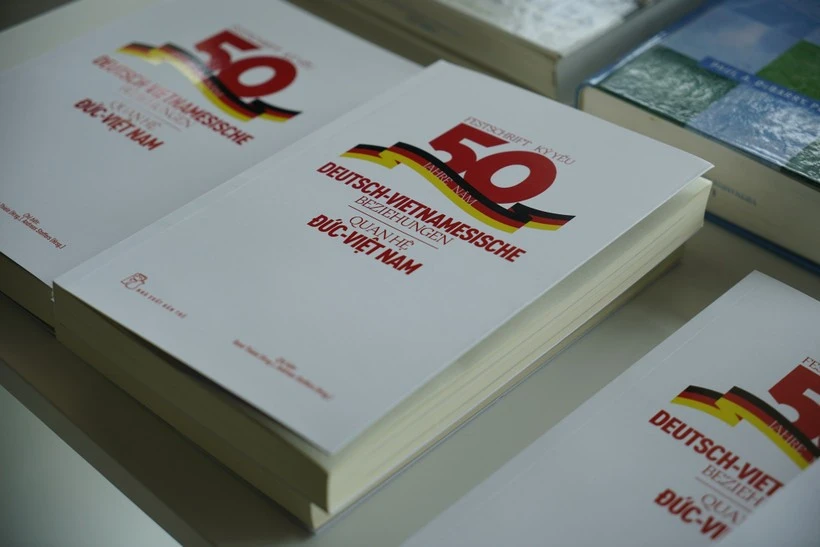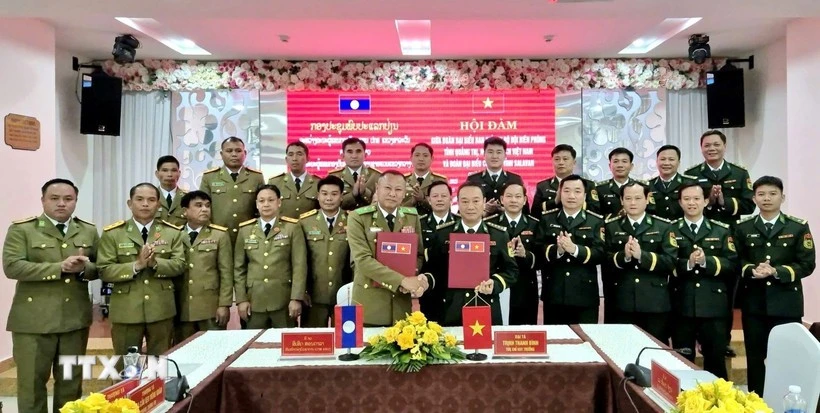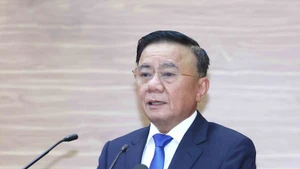Looking up at the red flag with a golden star, President Ho Chi Minh, on behalf of the Committee, read the oath: “We, those elected by the delegates of the National People’s Congress to the National Liberation Committee to lead our people’s revolution, pledge before the sacred flag of the Fatherland to resolutely lead the people forward, to fight with all our strength against the enemy, to win back independence and freedom for the Fatherland. Even if we must sacrifice our last drop of blood, we will never retreat. We swear.”
The Tan Trao National People’s Congress demonstrated the unity and consensus of the entire nation at this decisive moment. It symbolised the absolute trust of the people in the Party and embodied their unyielding determination to rise up for freedom and independence.
In Ha Noi, amid fervent preparations for an uprising, a rally organised by the General Association of Civil Servants took place at Opera House Square on the afternoon of August 17. Following secret instructions, mass organisations in the inner and outer districts of the city, as well as some surrounding areas in Gia Lam and Ha Dong, mobilised the crowds to attend. The turnout swelled to tens of thousands, filling the area in front of and around the Opera House. Members of the self-defence and propaganda units mingled within the masses, awaiting orders to act.
As the rally opened, the red flag with the golden star appeared in the crowd and from the Opera House balcony. The masses cheered and applauded. The police and security forces stood bewildered, paralysed. Viet Minh propaganda units mounted the stage, announcing that Japan had surrendered unconditionally to the Allies, and called upon the people to support the Viet Minh uprising.
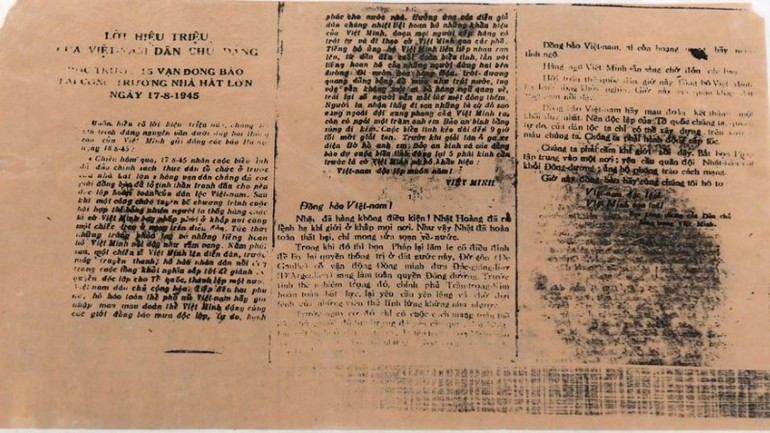
After the rally, the crowd spontaneously formed ranks, led by armed self-defence units, and marched from the Opera House through the central streets, chanting slogans: “Support Viet Minh”, “Down with the puppets”, “Independent Viet Nam”. The rally organised by the General Association of Civil Servants therefore transformed into a demonstration in support of the Viet Minh, of immense significance to the uprising in Ha Noi.
It was a powerful display of revolutionary strength by the masses in Ha Noi; a clear expression of determination to act and readiness for the revolutionary struggle. The overwhelming majority of the people, including the middle strata, no longer harboured illusions about Japan and its puppets. They placed their trust in the Viet Minh and stood ready to support them. The puppet regime dared not resist; the police and security forces were powerless, paralysed. The rally in support of the Viet Minh unfolded less than 200 metres from the headquarters of Japan’s 38th Army Corps, yet the Japanese did not intervene. This proved the feasibility of neutralising Japanese forces.
The rally later turned into a victorious demonstration, suggesting a method of uprising in Ha Noi: organising rallies to mobilise the masses to overthrow the puppet authorities, which later evolved into armed marches, using the pressure of the armed masses as a nucleus to seize key offices in the city and capture power.
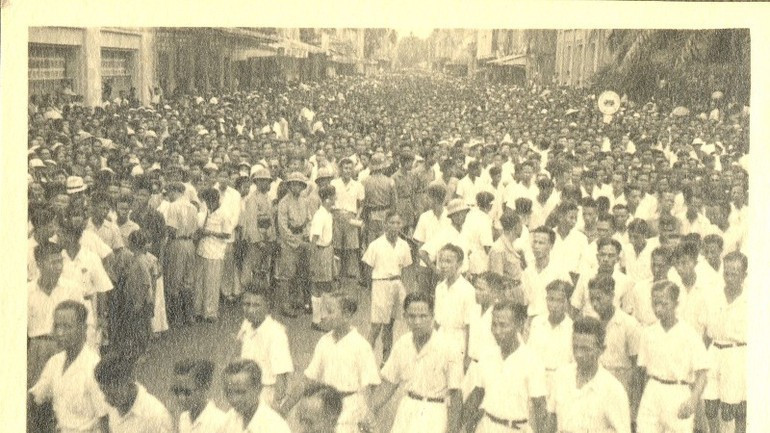
That very evening, the Revolutionary Military Committee held an expanded meeting at Dich Vong (Tu Liem, Ha Noi) and decided to launch the uprising to seize power on August 19.
In Hai Duong Province, Cam Giang District was the first locality to initiate the general uprising in the province, which then spread to Kim Thanh and Kinh Mon districts.
In the provincial town, taking advantage of a rally organised by the puppet regime in support of Tran Trong Kim’s government, our forces, positioned on both sides of the streets, merged into the demonstration. Those already embedded within the crowd pulled down the “Que Ly” flag (the flag under Tran Trong Kim’s government) and raised the red flag with a golden star, shouting slogans: “Down with Tran Trong Kim’s government”, “Support the revolution, support Viet Minh”. The Japanese collaborators, terrified, dared not resist and withdrew before the surging revolutionary momentum.
The demonstration marched through the streets and stopped at Bao Dai Garden (now Independence Square) to hold a rally. A Viet Minh representative addressed the crowd, explaining the Viet Minh’s Ten-Point National Salvation Programme, announcing Japan’s surrender to the Allies, and calling on the people to join and support the Viet Minh to win independence for the nation. The people enthusiastically endorsed the call. The revolutionary spirit spread throughout the town.
After the rally, the revolutionary forces organised by the Viet Minh divided into groups to seize provincial offices, the Governor’s mansion, Japanese barracks, and the security troops’ camp. Frightened by the storm of the revolutionary movement, the Provincial Governor had already fled. The remaining puppet officials, including Deputy Governor Tran Van Tuyen, declared their surrender, handed over documents to the revolution, and requested to join the Provisional Revolutionary Committee. The uprising in Hai Duong succeeded. Thereafter, the remaining districts rose up to seize power for the people.
In Hue, central envoys arrived to assist the Thua Thien Provincial Party Committee in leading the uprising. Implementing the resolutions of the provincial cadre conference (August 15, 1945), the people of Thua Thien’s districts successively overthrew the puppet authorities and established revolutionary administrations.
